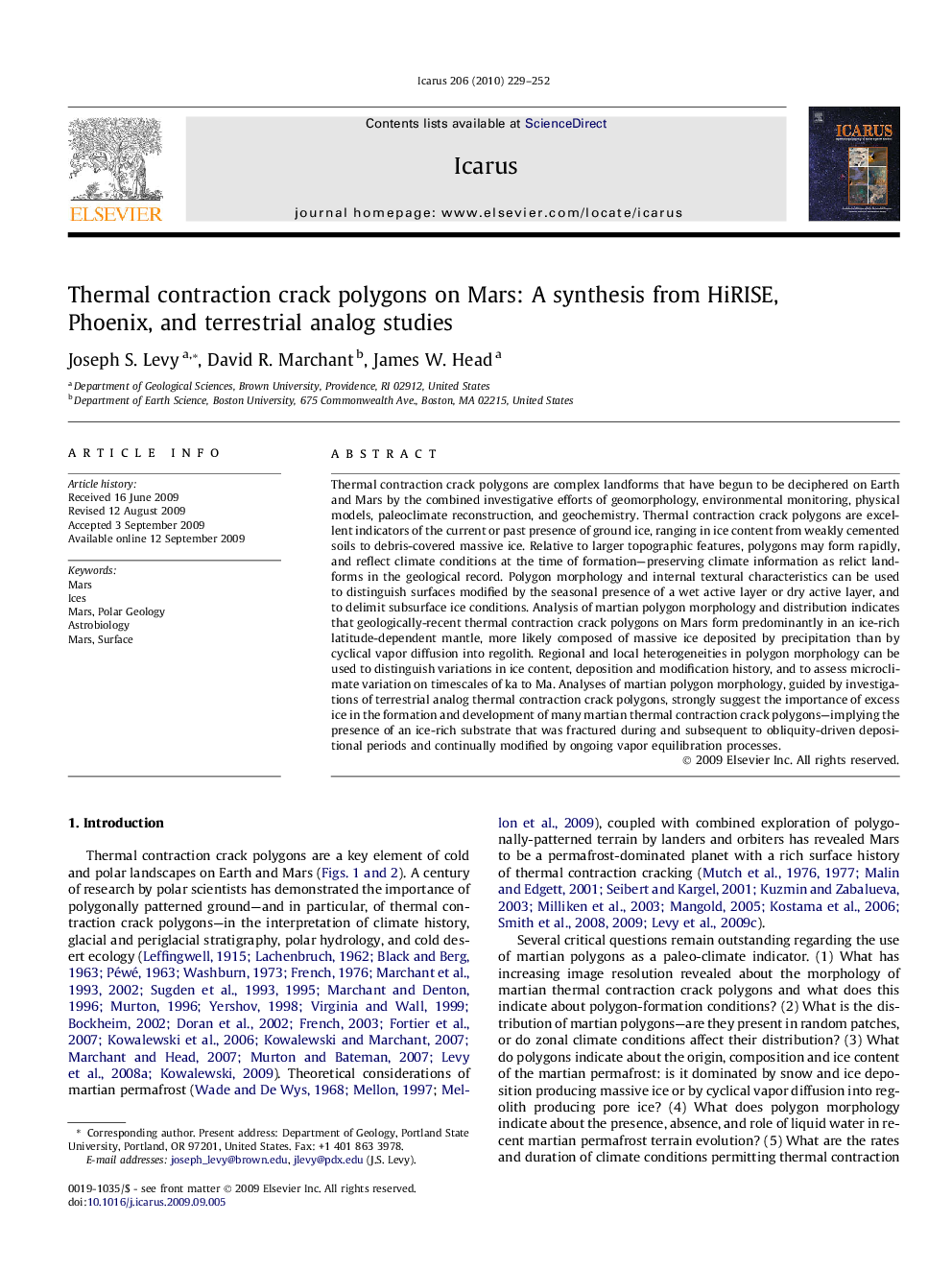| Article ID | Journal | Published Year | Pages | File Type |
|---|---|---|---|---|
| 1774725 | Icarus | 2010 | 24 Pages |
Abstract
Thermal contraction crack polygons are complex landforms that have begun to be deciphered on Earth and Mars by the combined investigative efforts of geomorphology, environmental monitoring, physical models, paleoclimate reconstruction, and geochemistry. Thermal contraction crack polygons are excellent indicators of the current or past presence of ground ice, ranging in ice content from weakly cemented soils to debris-covered massive ice. Relative to larger topographic features, polygons may form rapidly, and reflect climate conditions at the time of formation-preserving climate information as relict landforms in the geological record. Polygon morphology and internal textural characteristics can be used to distinguish surfaces modified by the seasonal presence of a wet active layer or dry active layer, and to delimit subsurface ice conditions. Analysis of martian polygon morphology and distribution indicates that geologically-recent thermal contraction crack polygons on Mars form predominantly in an ice-rich latitude-dependent mantle, more likely composed of massive ice deposited by precipitation than by cyclical vapor diffusion into regolith. Regional and local heterogeneities in polygon morphology can be used to distinguish variations in ice content, deposition and modification history, and to assess microclimate variation on timescales of ka to Ma. Analyses of martian polygon morphology, guided by investigations of terrestrial analog thermal contraction crack polygons, strongly suggest the importance of excess ice in the formation and development of many martian thermal contraction crack polygons-implying the presence of an ice-rich substrate that was fractured during and subsequent to obliquity-driven depositional periods and continually modified by ongoing vapor equilibration processes.
Related Topics
Physical Sciences and Engineering
Earth and Planetary Sciences
Space and Planetary Science
Authors
Joseph S. Levy, David R. Marchant, James W. Head,
